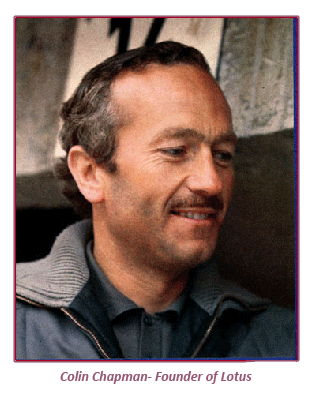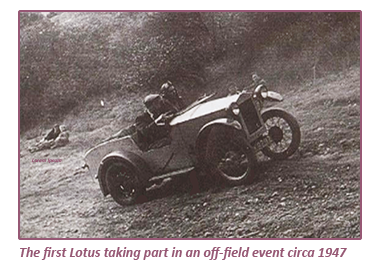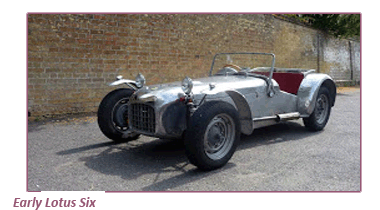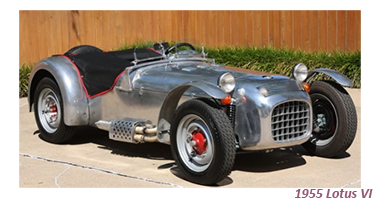
 One of the most vibrant and often controversial figures on the UK motoring scene of the Fifties and Sixties was Colin Chapman, sometimes described as eccentric and more frequently as an engineering genius.
One of the most vibrant and often controversial figures on the UK motoring scene of the Fifties and Sixties was Colin Chapman, sometimes described as eccentric and more frequently as an engineering genius.
Years before Chapman launched his first " road" sports cars bearing his name; he was already well known in racing circles as a developer of racing vehicles.
 Chapman, an engineer by profession, reportedly fostered his love for cars and his need for speed by participating in trial races while still at University during the late Forties. Using his engineering skills, Chapman modified his own trials car that was based on a 1928 Austin Seven.
Chapman, an engineer by profession, reportedly fostered his love for cars and his need for speed by participating in trial races while still at University during the late Forties. Using his engineering skills, Chapman modified his own trials car that was based on a 1928 Austin Seven.
Chapman and his Seven became a well known and respected duo around the trial race circuit in London and the south of England, winning enough prize money to finance the building of the first Lotus, again Austin Seven based which was named the Lotus Mark II.
![]()
 The Lotus Engineering Company was formed in 1952, with the day to day running of the company left in the hands of Chapman's partner Michael Allen, while another talented engineer by the name of Frank Costin joined the group the following year.
The Lotus Engineering Company was formed in 1952, with the day to day running of the company left in the hands of Chapman's partner Michael Allen, while another talented engineer by the name of Frank Costin joined the group the following year.
 Chapman, who inevitably went against the flow, situated the Lotus Engineering plant in the unlikely setting of a fashionable suburb, Hornsey in North London, far away from the massive car factories of the Fifties which were grouped around the Midlands of England.
Chapman, who inevitably went against the flow, situated the Lotus Engineering plant in the unlikely setting of a fashionable suburb, Hornsey in North London, far away from the massive car factories of the Fifties which were grouped around the Midlands of England.
While his business was still getting off the ground, Chapman was already in the air, balancing his time between Hornsey, and the nearby Royal Air Force base, where he was still serving his national service.
 This situation would continue until 1955 when Chapman was finally released to concentrate his considerable talents and energy on developing his own " boutique" car production company.
This situation would continue until 1955 when Chapman was finally released to concentrate his considerable talents and energy on developing his own " boutique" car production company.
Costin's particular expertise was in the development of advanced monocoque chassis design.
The first Lotus cars were basically modified Austin Seven specials, although they sold well enough to allow Chapman and Lotus sufficient financial resources to specialise in building basic two-seater sports cars, always on multi-tube chassis platforms. One of Chapman’s earliest offerings was the Lotus 6, a genuinely low-cost, street-legal competitor that they could drive to the track or hill climb, compete, and go home in afterwards.
One of Chapman’s earliest offerings was the Lotus 6, a genuinely low-cost, street-legal competitor that they could drive to the track or hill climb, compete, and go home in afterwards.
 By the end of the Fifties, Chapman had formed a limited company, trading under the title Lotus Cars, and began to produce his first in-house designed and developed cars, focusing on a more advanced version of the Seven and the monocoque-shelled Elite.
By the end of the Fifties, Chapman had formed a limited company, trading under the title Lotus Cars, and began to produce his first in-house designed and developed cars, focusing on a more advanced version of the Seven and the monocoque-shelled Elite.
The first Lotus cars were basically modified Austin Seven specials, although they sold well enough to allow Chapman and Lotus sufficient financial resources to specialise in building basic two-seater sports cars, always on multi-tube chassis platforms.


